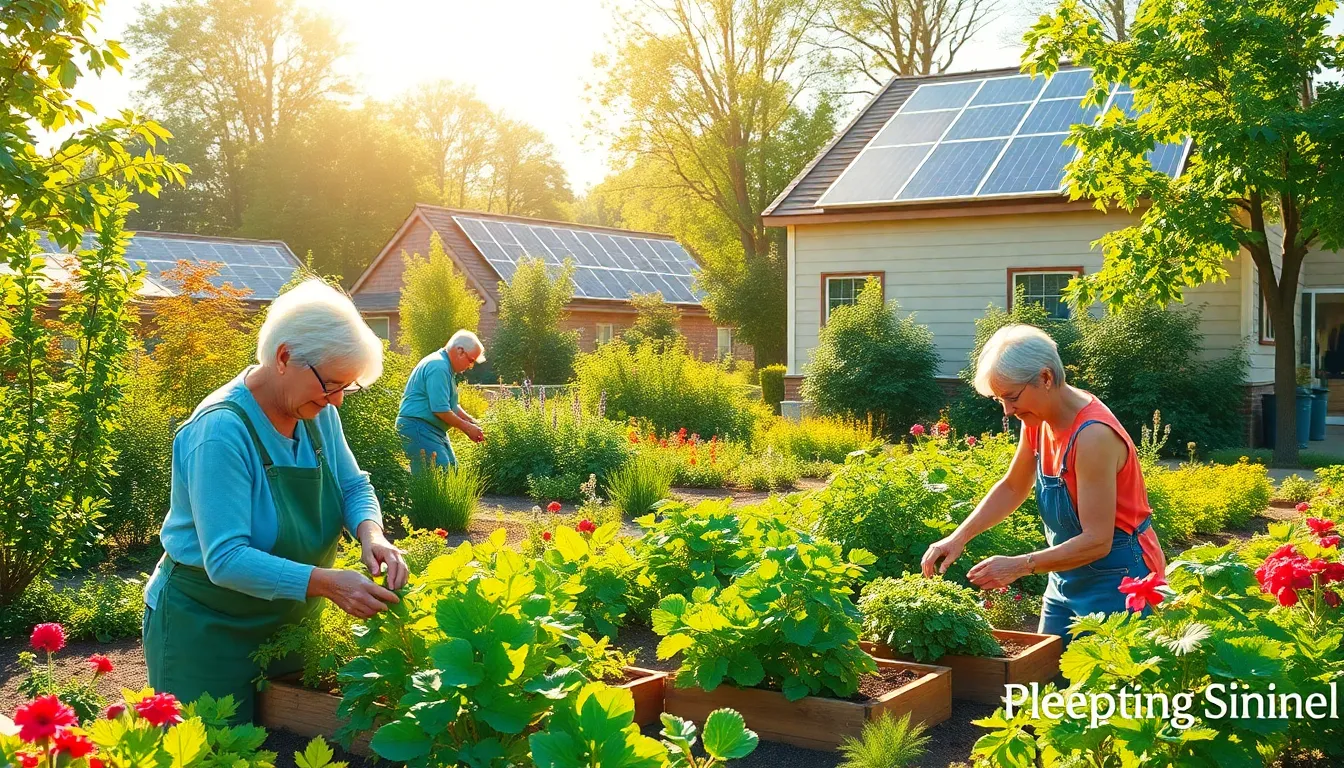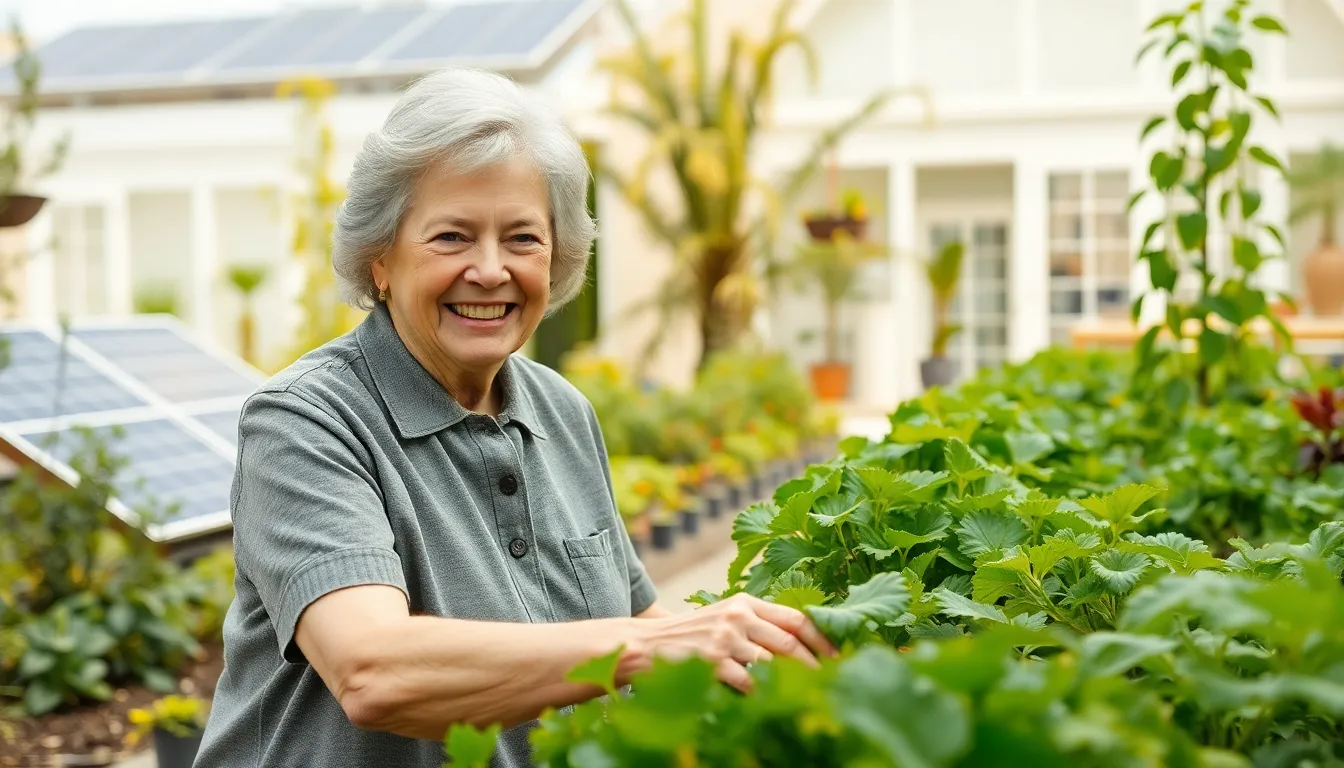As the world becomes more eco-conscious, retirement homes are stepping up their game, proving that going green isn’t just for millennials. Imagine a place where solar panels are the norm and veggie gardens are a daily delight. Green retirement homes are not just about saving the planet; they offer a healthier lifestyle for residents while keeping those pesky utility bills at bay.
Picture this: a community where the air smells like fresh-cut grass instead of stale coffee. Residents can enjoy organic meals, participate in eco-friendly activities, and even brag about their energy-efficient living spaces. It’s not just a retirement home; it’s a vibrant, sustainable community where aging gracefully meets environmental responsibility. So, why not trade in that old rocking chair for a compost bin and join the green revolution?
Table of Contents
ToggleOverview of Green Retirement Homes
Green retirement homes focus on environmentally sustainable living, integrating eco-friendly practices into their daily operations. Residents enjoy energy-efficient designs, which often include solar panels and rainwater harvesting systems. Vegetable gardens provide fresh produce, promoting a healthy diet while reducing reliance on store-bought goods. Communities often implement waste recycling programs, ensuring minimal environmental impact.
Retirement homes prioritize natural light by utilizing large windows and skylights, creating bright, airy spaces. Sustainable materials often furnish interiors, providing stylish options that align with eco-friendly values. Residents participate in activities that emphasize environmental awareness, fostering connections among like-minded individuals.
Green amenities commonly include walking paths surrounded by native plants, enhancing outdoor enjoyment while supporting local ecosystems. Many facilities offer educational workshops on sustainable living, allowing residents to learn and engage in eco-conscious practices. This focus on sustainability not only benefits the environment but also contributes to residents’ overall well-being.
By creating vibrant, socially responsible environments, green retirement homes appeal to individuals seeking a sustainable lifestyle. Such communities enrich the aging experience through health-conscious policies and a supportive atmosphere. With the increasing demand for greener living solutions, these retirement homes reflect a significant shift in how people envision their later years.
Benefits of Green Retirement Homes

Green retirement homes offer numerous advantages for both the environment and residents’ lives. By promoting sustainable practices, these communities create healthier living environments and reduce ecological footprints.
Environmental Impact
Significant reductions in energy consumption occur in green retirement homes due to energy-efficient designs. Solar panels harness renewable energy, lessening dependence on fossil fuels. Additionally, rainwater harvesting systems mitigate water waste. Communities that prioritize recycling effectively minimize landfill contributions and enhance resource use. Landscapes often feature native plants, supporting local ecosystems and fostering biodiversity. Such practices lead to lower carbon footprints, making a positive impact on overall environmental health.
Health and Well-being
Well-being flourishes in green retirement homes, where residents enjoy fresh produce from on-site vegetable gardens. Nutrient-rich meals contribute to healthier diets and improved physical health. Natural light floods living spaces, elevating mood and energy levels. Access to walking paths encourages outdoor activity, benefiting both physical and mental health. Communities offer engaging workshops, promoting environmental awareness and social connections. These elements create a vibrant atmosphere that enhances overall quality of life for residents.
Features of Green Retirement Homes
Green retirement homes showcase several innovative characteristics that enhance environmental sustainability. These residences integrate eco-friendly practices for healthier living and community engagement.
Sustainable Building Materials
Sustainable building materials play a crucial role in green retirement homes. Many facilities utilize reclaimed wood to reduce deforestation. Additionally, bamboo, a rapidly renewable resource, provides a durable and eco-friendly alternative for flooring and furniture. Recycled steel and low-VOC (volatile organic compound) paints improve indoor air quality. These materials contribute to energy-efficient designs that lower overall environmental impacts. Strong emphasis on sustainability cultivates a comfortable and responsible living environment for residents.
Energy Efficiency
Energy efficiency stands at the forefront of green retirement homes. Solar panels typically supply renewable energy, significantly lowering monthly utility costs. Furthermore, energy-efficient appliances and LED lighting enhance conservation efforts within these communities. Many homes also feature advanced insulation to maintain optimal indoor temperatures while minimizing heating and cooling demands. Rainwater harvesting systems help with irrigation and reduce water consumption. By focusing on energy-efficient technologies, these retirement homes foster a sustainable lifestyle for residents and the planet.
Choosing the Right Green Retirement Home
Selecting a green retirement home requires evaluating several factors that ensure both a sustainable and fulfilling lifestyle. Prioritizing eco-friendly practices enhances the overall living experience for residents.
Key Considerations
Energy efficiency ranks high among essential features. Energy-efficient designs, such as solar panels and advanced insulation, lower utility costs while reducing environmental impact. Access to organic gardens adds significant value by promoting healthy eating. Many residents cherish proximity to nature, so outdoor spaces with native plants and walking paths nurture physical well-being. Safety and community involvement offer additional layers of comfort. Residents experience vibrant social lives through engaging in sustainability-focused activities, contributing to a supportive community atmosphere.
Questions to Ask
Inquiring about certifications proves essential for assessing a facility’s commitment to sustainability. Understand if the home uses renewable energy sources and how waste management practices are implemented. Asking about organic gardening programs provides insight into food sourcing. Investigate the types of building materials used in construction because sustainable choices improve indoor air quality. Lastly, consider available activities that foster environmental awareness and social connections, ensuring residents experience a holistic, green lifestyle.
Green retirement homes represent a transformative approach to aging that prioritizes sustainability and well-being. By integrating eco-friendly practices into daily life these communities not only enhance residents’ health but also contribute positively to the environment. The emphasis on energy efficiency organic gardening and community involvement creates vibrant spaces where individuals can thrive.
As more people seek sustainable living options in their later years the appeal of these green retirement homes will continue to grow. They offer a unique opportunity for individuals to live harmoniously with nature while enjoying a fulfilling lifestyle. Embracing this shift can lead to a more sustainable future for both residents and the planet.


